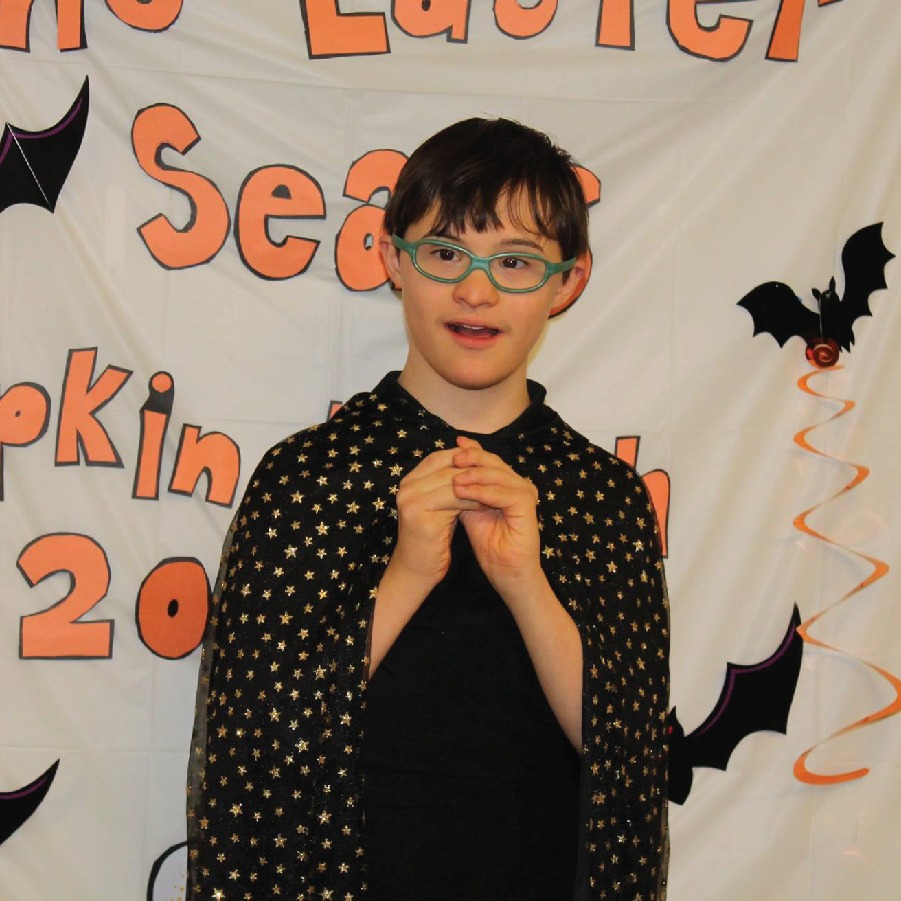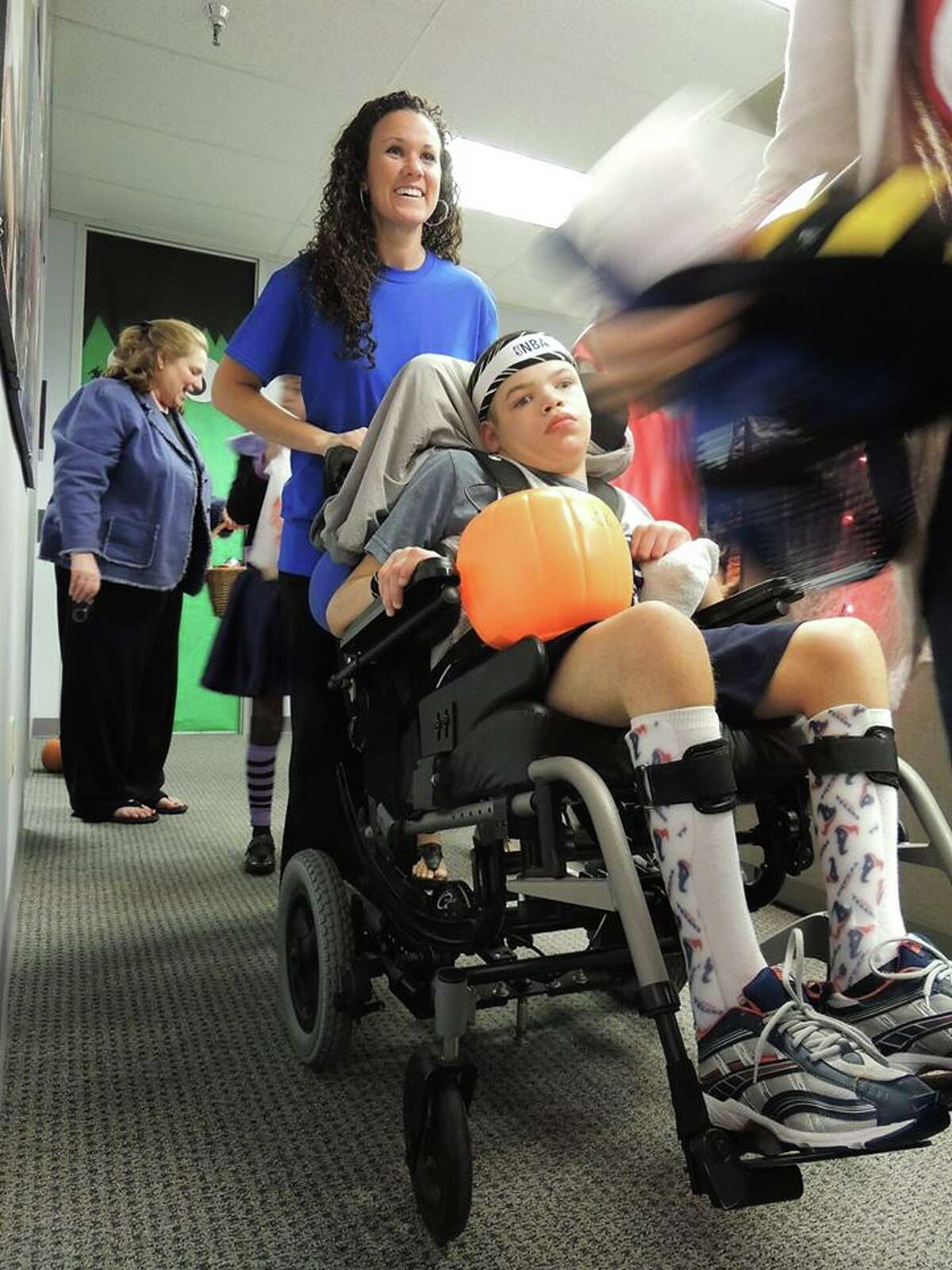
Halloween is traditionally a time for sweet snacks, dressing up, staying out late, and pretending to believe in ghosts. But for many kids with disabilities, such activities are the opposite of a good time. Especially when mixed with noisy crowds and glaring/blaring/flapping decorations.
One popular alternative is organized sensory-friendly events, which don’t have to be held after dark or exactly on October 31. (You’re invited to the Pumpkin Patch at our own Easter Seals Greater Houston: see “Come Celebrate with Us,” below, for details.)
However your family celebrates Halloween, the following tips help maximize enjoyment and minimize stress.
- Don’t overdose on elaborate preparations. Leave everyone time to rest up before the big evening.
- Plan and practice, especially if this is a new experience for your children. Explain what to expect and what’s make-believe vs. real. Walk all routes in advance, both before and after dark.
- See if your area has disability-friendly trick-or-treating programs such as “blue buckets” (to indicate a trick-or-treater has autism) or “teal pumpkins” (to indicate nonallergenic treats).
- Get your children’s direct input on preferred activities.
- Never try to shame or tease anyone into joining an activity. If one child loathes what everyone else enjoys, find that child a caretaker or play group they can join for another special Halloween event.
- Share a healthy meal or snack before going out: hungry kids and handfuls of candy are an explosive combination.
- Recognize that things your kids have no problems with may trigger meltdowns in other people’s kids. Think long and hard before decking your outdoors with leering zombies, flashing lights, or anything that makes unexpected movements or noises.
Read on for tips appropriate to specific disabilities.
How Much Scariness Is Tolerable? Overstimulation and Anxiety Issues
For some kids, feeling trapped in a corn maze can be as traumatic as having ghostly figures leap at them from the shadows. If your child has autism or an anxiety disorder, traditional Halloween activities present special challenges.
- Don’t just tell your kids what’s real and what’s imaginary: let them examine decorations close up in daylight, or watch people they know mask up and then unmask.
- If your child is sensitive to fabric textures and/or makeup, improvise a costume from familiar everyday clothing.
- Remember noise-cancelling headphones and other aids to reduce sensory input.
- Assign a “buddy” to each child: family groups can easily lose one member in the crowd, especially where someone has “wandering” tendencies.
- As an additional precaution, have everyone carry identification with your mobile-phone number. (Apps such as If I Need Help make this easier with scannable ID tags.)
- If kids reach their sensory-input limit earlier than anticipated, be prepared to go home. Better to miss the last part of a program than risk having it interrupted by a public meltdown.
Dangers after Dark: Hearing, Vision, and Mobility Concerns
Neurotypical kids can have meltdowns too. And for children with physical disabilities, navigating a crowded celebration or a street full of trick-or-treaters can be doubly fatiguing, frightening, or frustrating. It can also lead to worse-than-imaginary terrors for parents trying to supervise a child who has low vision and can’t discern familiar voices over background noise; is hard of hearing and having difficulty seeing their way in darkened surroundings; or uses crutches in an area full of darting “ghouls” and motor traffic.
- Before committing to any large community activity, consider whether your child has experience in such settings—particularlyafter dark.
- A child with visual and/or hearing disabilities may have particular difficulty keeping track of the group when everyone is in costume. Take time to familiarize everyone with everybody else’s outfits.
- Have everyone wear glow-in-the-dark stickers or armbands (kids love them as costume accessories) to further identify each other after sunset.
- A service dog can guard children against collisions, falling, or wandering. So can a pet dog, if trained to stay close and calm in bustling settings.
Can’t Say “Trick or Treat”: Coping with Nonverbal Challenges
Whether speech difficulties are due to physical disability or a neurodivergent brain, many kids find it embarrassing to have their parents say “Trick or Treat” for them. Ask your children what they prefer:
- Speaking for themselves if partially verbal
- Using a recorded or app-generated voice
- Handing out cards or carrying a sign to explain their disability
- Doing something other than trick-or-treating for Halloween
Also discuss what to do if someone tries to engage them in extended conversation (someone usually does). Or if anyone is rude enough to ask you, “What’s wrong with her?” as though the child wasn’t even there.
Is That Treat Safe to Eat? Allergies and Food Sensitivities
The “teal pumpkin” that indicates allergy-friendly treats was mentioned above. Whether or not that practice is common in your area, double-check your children’s treat containers before they put anything in their mouths. Especially, make it clear that no one is to eat anything at random before you finish the treat circuit. (Bring along snacks from home to reduce temptations.)
If anything personally inedible does turn up, the disappointment of parting with it will be eased if you trade it with an acceptable treat of equal value.
No Laughing Matter: When “Haunted” Attractions Reinforce Stigma
One final thing. If your family enjoys “haunted houses,” don’t patronize any that feature “asylum” themes. Portraying horror as an institution of straitjacketed, raving, violent “patients” perpetuates cruel stereotypes and makes a mockery of everyone who has, or provides treatment for, real mental illness.
Come Celebrate with Us!

For a “Halloween party” everyone can enjoy, the Easter Seals Pumpkin Patch will be open Tuesday, October 25, from 2–6:30 p.m. at our Loop Central office (south down Loop 610 from the Galleria; validated garage parking available). Features sensory-friendly decorations, games, photos, and a pumpkin art playgroup as grand finale. Please RSVP so we can be sure of enough treats to go around.
Apps to Help You Prepare and Celebrate
BridgingApps Halloween Favorites App List is loaded with games, activities, and not-too-scary ghosts and witches to help your family enjoy a fun and safe celebration. See also BridgingApps Fun Fall App List for general-autumn and Thanksgiving options.

